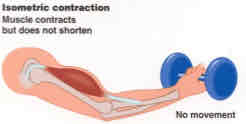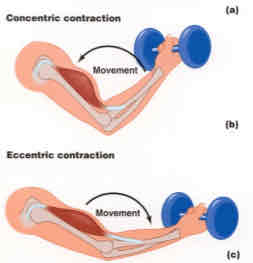movement analysis 1/27
1/17
There's no tags or description
Looks like no tags are added yet.
Name | Mastery | Learn | Test | Matching | Spaced |
|---|
No study sessions yet.
18 Terms
static contraction
isometric

dynamic contraction
isokinetic, isotonic

eccentric contraction
generates the greatest muscle tension
key component of functional movement, e.g. deceleration
implications for high injury risk, e.g. strains
2 key considerations for which muscle is working
movement dynamics and force dynamics
movement dynamics
what joint is moving (primary joint of motion )?
any secondary joint of motion?
effect of gravity or external resistance?
force dynamics
what type of contraction is occurring?
muscle lengthening or shortening?
muscle action algorithm scenario A
gravity overpowers muscle torque and resistance overpowers muscle torque→muscle yields and lengthens
→deceleration force→eccentric contraction
muscle action algorithm scenario B
muscle torque overpowers gravity, muscle torque overpowers resistance→muscle dominates and shortens
→acceleration force→concentric contraction
muscle action algorithm scenario C
force counterbalances→isometric contraction
movement dynamics considerations
direction of motion of a limb does not always dictate which muscle group is active
active muscle group may become inactive depending on the direction of force (muscle action can switch from agonist to antagonist)
acceleration force by PT and pt, pt wins →
concentric assisted active exercise
acceleration force by pt, pt wins →
concentric “free” active exercise
acceleration force by PT, pt yield →
eccentric resisted active exercise
deceleration force by PT, pt wins →
concentric resisted active exercise
push up analysis
up: shoulder flexors concentric RAEx, elbow extensors concentric RAEx, shoulder adductors concentric RAEx, scapula protractors concentric RAEx
down: shoulder flexors eccentric RAEx, elbow extensors eccentric RAEx, shoulder adductors eccentric RAEx, scapula protractors eccentric RAEx
lombards paradox
self contradiction
squats
tend to impact distal quadriceps fibers more
can significantly improve quadriceps power
leg (knee) extension
tends to impact proximal quadriceps fibers more
generates a greater torque and hypertrophy in rectus femoris